Nokia 2011 Annual Report Download - page 107
Download and view the complete annual report
Please find page 107 of the 2011 Nokia annual report below. You can navigate through the pages in the report by either clicking on the pages listed below, or by using the keyword search tool below to find specific information within the annual report.-
 1
1 -
 2
2 -
 3
3 -
 4
4 -
 5
5 -
 6
6 -
 7
7 -
 8
8 -
 9
9 -
 10
10 -
 11
11 -
 12
12 -
 13
13 -
 14
14 -
 15
15 -
 16
16 -
 17
17 -
 18
18 -
 19
19 -
 20
20 -
 21
21 -
 22
22 -
 23
23 -
 24
24 -
 25
25 -
 26
26 -
 27
27 -
 28
28 -
 29
29 -
 30
30 -
 31
31 -
 32
32 -
 33
33 -
 34
34 -
 35
35 -
 36
36 -
 37
37 -
 38
38 -
 39
39 -
 40
40 -
 41
41 -
 42
42 -
 43
43 -
 44
44 -
 45
45 -
 46
46 -
 47
47 -
 48
48 -
 49
49 -
 50
50 -
 51
51 -
 52
52 -
 53
53 -
 54
54 -
 55
55 -
 56
56 -
 57
57 -
 58
58 -
 59
59 -
 60
60 -
 61
61 -
 62
62 -
 63
63 -
 64
64 -
 65
65 -
 66
66 -
 67
67 -
 68
68 -
 69
69 -
 70
70 -
 71
71 -
 72
72 -
 73
73 -
 74
74 -
 75
75 -
 76
76 -
 77
77 -
 78
78 -
 79
79 -
 80
80 -
 81
81 -
 82
82 -
 83
83 -
 84
84 -
 85
85 -
 86
86 -
 87
87 -
 88
88 -
 89
89 -
 90
90 -
 91
91 -
 92
92 -
 93
93 -
 94
94 -
 95
95 -
 96
96 -
 97
97 -
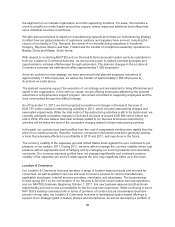 98
98 -
 99
99 -
 100
100 -
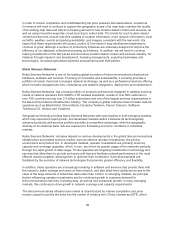 101
101 -
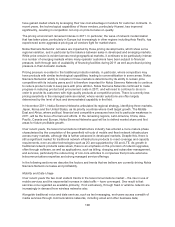 102
102 -
 103
103 -
 104
104 -
 105
105 -
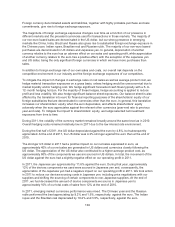 106
106 -
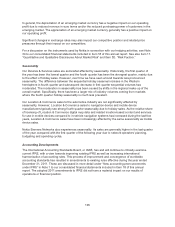 107
107 -
 108
108 -
 109
109 -
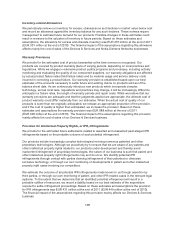 110
110 -
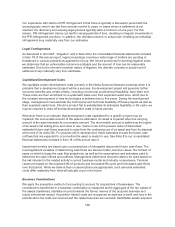 111
111 -
 112
112 -
 113
113 -
 114
114 -
 115
115 -
 116
116 -
 117
117 -
 118
118 -
 119
119 -
 120
120 -
 121
121 -
 122
122 -
 123
123 -
 124
124 -
 125
125 -
 126
126 -
 127
127 -
 128
128 -
 129
129 -
 130
130 -
 131
131 -
 132
132 -
 133
133 -
 134
134 -
 135
135 -
 136
136 -
 137
137 -
 138
138 -
 139
139 -
 140
140 -
 141
141 -
 142
142 -
 143
143 -
 144
144 -
 145
145 -
 146
146 -
 147
147 -
 148
148 -
 149
149 -
 150
150 -
 151
151 -
 152
152 -
 153
153 -
 154
154 -
 155
155 -
 156
156 -
 157
157 -
 158
158 -
 159
159 -
 160
160 -
 161
161 -
 162
162 -
 163
163 -
 164
164 -
 165
165 -
 166
166 -
 167
167 -
 168
168 -
 169
169 -
 170
170 -
 171
171 -
 172
172 -
 173
173 -
 174
174 -
 175
175 -
 176
176 -
 177
177 -
 178
178 -
 179
179 -
 180
180 -
 181
181 -
 182
182 -
 183
183 -
 184
184 -
 185
185 -
 186
186 -
 187
187 -
 188
188 -
 189
189 -
 190
190 -
 191
191 -
 192
192 -
 193
193 -
 194
194 -
 195
195 -
 196
196 -
 197
197 -
 198
198 -
 199
199 -
 200
200 -
 201
201 -
 202
202 -
 203
203 -
 204
204 -
 205
205 -
 206
206 -
 207
207 -
 208
208 -
 209
209 -
 210
210 -
 211
211 -
 212
212 -
 213
213 -
 214
214 -
 215
215 -
 216
216 -
 217
217 -
 218
218 -
 219
219 -
 220
220 -
 221
221 -
 222
222 -
 223
223 -
 224
224 -
 225
225 -
 226
226 -
 227
227 -
 228
228 -
 229
229 -
 230
230 -
 231
231 -
 232
232 -
 233
233 -
 234
234 -
 235
235 -
 236
236 -
 237
237 -
 238
238 -
 239
239 -
 240
240 -
 241
241 -
 242
242 -
 243
243 -
 244
244 -
 245
245 -
 246
246 -
 247
247 -
 248
248 -
 249
249 -
 250
250 -
 251
251 -
 252
252 -
 253
253 -
 254
254 -
 255
255 -
 256
256 -
 257
257 -
 258
258 -
 259
259 -
 260
260 -
 261
261 -
 262
262 -
 263
263 -
 264
264 -
 265
265 -
 266
266 -
 267
267 -
 268
268 -
 269
269 -
 270
270 -
 271
271 -
 272
272 -
 273
273 -
 274
274 -
 275
275 -
 276
276 -
 277
277 -
 278
278 -
 279
279 -
 280
280 -
 281
281 -
 282
282 -
 283
283 -
 284
284 -
 285
285 -
 286
286 -
 287
287 -
 288
288 -
 289
289 -
 290
290 -
 291
291 -
 292
292 -
 293
293 -
 294
294 -
 295
295 -
 296
296
 |
 |
In general, the depreciation of an emerging market currency has a negative impact on our operating
profit due to reduced revenue in euro terms and/or the reduced purchasing power of customers in the
emerging market. The appreciation of an emerging market currency generally has a positive impact on
our operating profit.
Significant changes in exchange rates may also impact our competitive position and related price
pressures through their impact on our competitors.
For a discussion on the instruments used by Nokia in connection with our hedging activities, see Note
34 to our consolidated financial statements included in Item 18 of this annual report. See also Item 11.
“Quantitative and Qualitative Disclosures About Market Risk” and Item 3D. “Risk Factors.”
Seasonality
Our Devices & Services sales are somewhat affected by seasonality. Historically, the first quarter of
the year has been the lowest quarter and the fourth quarter has been the strongest quarter, mainly due
to the effect of holiday sales. However, over time we have seen a trend towards less pronounced
seasonality. The difference between the sequential holiday seasonal increase in the Western
hemisphere in fourth quarter and subsequent decrease in first quarter sequential volumes has
moderated. The moderation in seasonality has been caused by shifts in the regional make-up of the
overall market. Specifically, there has been a larger mix of industry volumes coming from markets
where the fourth quarter holiday seasonality is much less prevalent.
Our Location & Commerce sales to the automotive industry are not significantly affected by
seasonality. However, Location & Commerce sales to navigation device and mobile device
manufacturers typically see strong fourth quarter seasonality due to holiday sales. As the relative share
of licensing of Location & Commerce digital map data and related location-based content and services
for use in mobile devices compared to in-vehicle navigation systems has increased during the last few
years, Location & Commerce sales have been increasingly affected by the same seasonality as mobile
device sales.
Nokia Siemens Networks also experiences seasonality. Its sales are generally higher in the last quarter
of the year compared with the first quarter of the following year due to network operators’ planning,
budgeting and spending cycles.
Accounting Developments
The International Accounting Standards Board, or IASB, has and will continue to critically examine
current IFRS, with a view towards improving existing IFRS as well as increasing international
harmonization of accounting rules. This process of improvement and convergence of worldwide
accounting standards has resulted in amendments to existing rules effective during the year ended
December 31, 2011. These are discussed in more detail under “New accounting pronouncements
under IFRS” in Note 1 to our consolidated financial statements included in Item 18 of this annual
report. The adopted 2011 amendments to IFRS did not have a material impact on our results of
operations or financial position.
105
